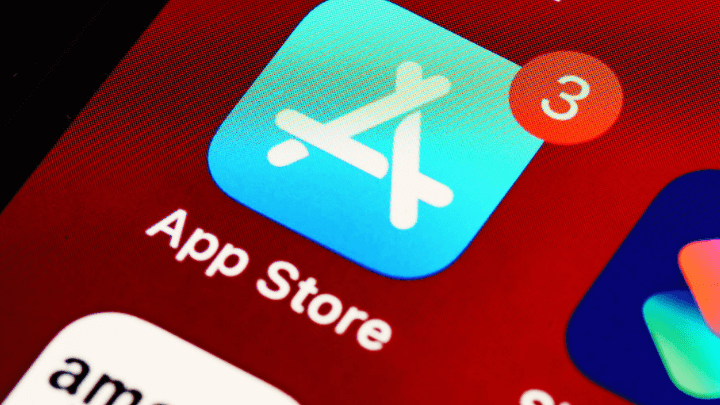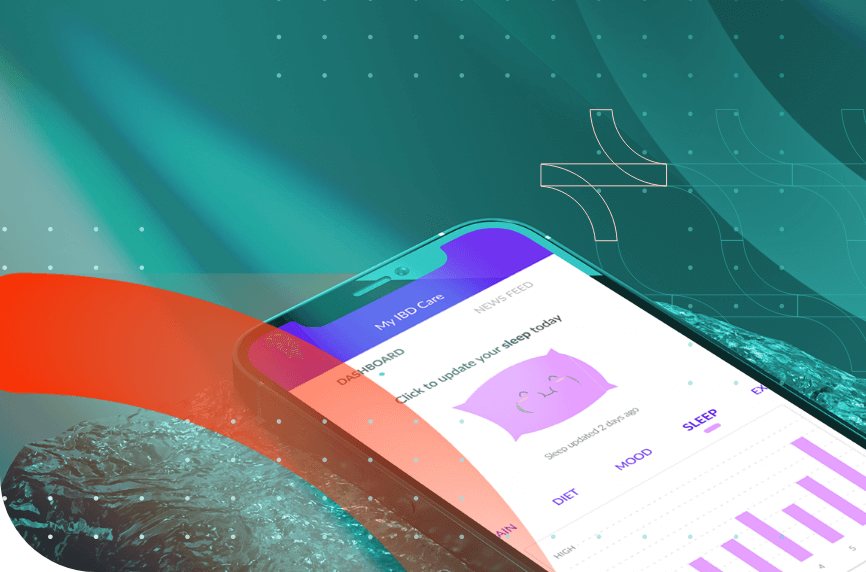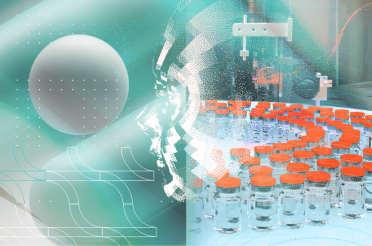In recent years, the field of mental health has seen a significant increase in the use of mobile applications as a tool for therapy and treatment. Mental health apps provide a convenient and accessible way for individuals to manage their mental health on their own time and in the comfort of their own homes.
The development of these apps is a complex process that requires a thorough understanding of both technology and psychology.
In this article, we will first explore the technicalities involved in developing a mental health app. After that, we will delve into the science behind the treatment of mental disorders and, consequently, the features offered in the apps.
Finally, we shall explore what lies ahead for the mental health app industry and discuss one of the great concerns in the field – data security.
I. Technology

Research and planning
The first step in the development of a mental health app is research and planning. The developers should identify the target audience, understand their needs and preferences, and determine the app’s purpose and features.
Mental health apps can target a wide range of audiences, including individuals with specific mental health conditions such as anxiety or depression, or those seeking general mental wellness resources to help them reduce stress and improve their overall well-being.
To better understand the target audience, developers may conduct market research and analyze user data from similar apps. This can help identify user preferences and pain points, and influence the app’s design and features.

Address all major challenged in your apps data security
Turn your concept into a successful digital solution by letting out experts help you with your health app vision.

Once the app’s purpose and features have been defined, it is important to conduct further research to determine the competition and identify gaps in the market. This will help to ensure that the app is unique and offers value to users.
Additionally, it is important to consider the app’s business model and revenue streams, which may include in-app purchases, advertisements, or subscriptions.
Design and development I – the prototype
The next step in mental health app development is design and development. This involves creating wireframes and prototypes to visualize the app’s user interface and user experience. The design should be intuitive and user-friendly, with clear navigation and easy-to-understand instructions.
Developers must also ensure that the app is accessible to all users, including those with physical or cognitive disabilities. This may involve incorporating features such as text-to-speech or audio descriptions, or ensuring that the app is compatible with screen readers.
Once the design is finalized, the app can be developed. This involves programming the app’s functionality and integrating it with any necessary external services, such as databases or APIs.
It is important to ensure that the app is secure and complies with data privacy laws, such as the Health Insurance Portability and Accountability Act (HIPAA) in the US and GDPR in the EU. In the next section, we explore the tech stack required to accomplish all of this.
Design and development II – the tech stack
The tech stack used to build a mental health solution will depend on the specific needs and requirements of the app. However, there are some common technologies and frameworks that are often used in mental health app development.
For the front-end of the application, developers may use frameworks such as React Native or Ionic. These frameworks allow for the development of cross-platform apps that can be used on both iOS and Android devices.
For the back-end of the app, developers may use serverless architectures, such as Amazon Web Services (AWS) Lambda or Google Cloud Functions. These architectures offer scalability and cost-effectiveness, as developers only pay for the resources they use.
Developers may also use databases such as MongoDB or PostgreSQL to store user data, and incorporate APIs and SDKs from third-party services such as Google Maps or Twilio to add additional functionality to the app.
Overall, the tech stack used to build a mental health app should be flexible and scalable, to allow for future updates and improvements as the app evolves. After all, if you are aiming for success, you should be in a good position to expand the project at the appropriate time.
Testing and iteration
After the app has been developed, it is important to test it thoroughly to ensure that it functions as intended and is free of bugs and errors. This may involve conducting user testing with a sample group of individuals to gather feedback and identify areas for improvement.
Based on the results of testing, the app may need to be iterated upon. This may involve making changes to the app’s design, functionality, or content. It is important to continue to involve mental health professionals in this process to ensure that the app remains effective and evidence-based.
Launch and maintenance

Once the app is launched, it is essential to monitor user feedback and make updates to the app as necessary. This can include fixing bugs or addressing technical issues, updating content or features based on user feedback, or adding new functionality to the app.
Regular maintenance of the app is crucial to ensuring that it remains effective and relevant over time.
User engagement is also important for maintaining the app’s success. You can encourage engagement by providing regular updates and fresh content, creating opportunities for users to interact with one another, and rewarding users for their participation in the app.

Transform your mental health app vision talent
Leverage the app development expertise in technology and customer psychology for your mental health app.
App developers should also ensure that the app remains compliant with relevant data privacy laws and standards, such as HIPAA, and continue to prioritize user privacy and data security. We will go over this aspect in detail in the last section of this article.
As mental health research and treatment methods continue to evolve, it is important for app developers to stay up-to-date on the latest developments in the field. This can involve incorporating new techniques and approaches into the app, collaborating with mental health professionals, or conducting new research to inform app development.
By remaining responsive to changes in the field, app developers can ensure that their apps remain effective and valuable tools for promoting mental health and well-being.
II. Psychology

Disorders and treatment methods
Mental health apps can target a variety of disorders, including:
- anxiety
- depression
- bipolar disorder
- obsessive-compulsive disorder (OCD)
- post-traumatic stress disorder (PTSD)
- eating disorders
- addictions
The methods used by these apps can vary depending on the disorder being treated and the preferences of the user. Therefore, what your app actually offers, i.e. what features it has, will be directly influenced by what mental health issues it aims to help users with.
Cognitive-behavioral therapy (CBT) is a common method used in mental health apps. CBT is a form of psychotherapy that focuses on changing negative thought patterns and behaviors. It has been extensively researched and is effective in treating a wide range of mental health conditions, including anxiety, depression, and OCD.
CBT is a goal-oriented and structured therapy that typically involves identifying and challenging negative thoughts and beliefs, learning coping skills, and practicing new behaviors.
Mindfulness-based stress reduction (MBSR) is another method used in mental health apps. MBSR is a form of mindfulness meditation that helps individuals reduce stress and increase self-awareness. It has been shown to be effective in treating a range of mental health conditions, including anxiety, depression, and PTSD.
MBSR involves paying attention to the present moment, without judgment, and practicing acceptance and compassion towards oneself.
Other methods used in mental health apps include dialectical behavior therapy (DBT) and acceptance and commitment therapy (ACT). DBT is effective in treating borderline personality disorder and addiction, and involves learning skills to manage emotions, communicate effectively, and tolerate distress.
ACT, on the other hand, can be useful in treating anxiety and depression. It teaches acceptance of negative thoughts and emotions, and how to focus on living a values-driven life.
Features of mental health apps
Mental health apps offer a variety of features based on the principles of different therapy schools outlined just now.
Listed below are some common features based on those principles:
- Mood tracking is a popular feature of mental health apps that allows users to track their moods and identify triggers that may be contributing to their mental health condition. This feature typically involves asking the user to rate their mood on a scale, with options ranging from very sad to very happy.
Users may also be asked to provide information about their daily activities and any significant events that occurred throughout the day. This information can then be used to identify patterns and triggers that may be impacting the user’s mental health.
- Meditation and relaxation exercises are another common feature of mental health apps. These exercises are designed to help users reduce stress and anxiety by guiding them through various mindfulness and relaxation techniques. These exercises may involve deep breathing, visualization, progressive muscle relaxation, and other relaxation techniques.
- Journaling is a feature that allows users to write down their thoughts and feelings to help process emotions. This may involve prompts or questions to guide the user in reflecting on their thoughts and feelings. Journaling can be a helpful tool for individuals with anxiety or depression, as it allows them to explore their emotions and gain a better understanding of their mental state. (3)
- Cognitive-behavioral exercises are designed to help users identify and change negative thought patterns and behaviors. These exercises may involve challenging negative thoughts, reframing negative self-talk, and practicing new behaviors. Cognitive-behavioral exercises are a common feature of mental health apps that target anxiety, depression, and OCD.
- Finally, social support is an aspect of many mental health apps that allows users to connect with others who are going through similar experiences. This could include online support groups, peer-to-peer chat, or other forms of social support. Social support can be a valuable resource for individuals with mental health conditions, as it can help reduce feelings of isolation and provide a sense of community.
III. Current challenges and future perspectives

In the final part of our guide, let’s take a look at the trends in the field of mental health apps and at the challenges the industry faces, particularly maintenance of data security.
Data security of mental health apps
Data security is a critical concern for mental health app developers. Mental health data is sensitive and personal, and must be protected to ensure user privacy and confidentiality.
Some steps that developers can take to ensure data security include.
Encryption
Encryption can be used to scramble data so that it is unreadable to anyone who does not have the key to decode it. This helps prevent unauthorized access to user data.
Two-factor authentication
Two-factor authentication requires users to provide two forms of identification to access their account, such as a password and a one-time code sent to their phone. This helps prevent unauthorized access to user accounts, even if a password is compromised.
Regular security audits
Developers should also conduct regular security audits to identify and address vulnerabilities in their app’s security measures. This can help ensure that the app is up-to-date with the latest security standards and can prevent potential data breaches.
Compliance with data privacy laws
Finally, developers should take steps to ensure that their app is secure and complies with data privacy laws, such as the Health Insurance Portability and Accountability Act (HIPAA) in the United States and the General Data Protection Regulation (GDPR) in the EU.
This includes implementing appropriate administrative, physical, and technical safeguards to ensure the confidentiality, integrity, and availability of electronic protected health information (ePHI).
Administrative safeguards might take the form of policies and procedures related to data security and privacy. This could mean assigning responsibility for privacy and security compliance to a Data Protection Officer (DPO), implementing workforce training programs, and conducting regular risk assessments.
Physical safeguards can include measures to protect the physical environment where ePHI is stored or accessed. These might look like using locked doors and secure storage areas, controlling access to workstations, and implementing device and media controls.
Implementing technological safeguards means offering thee features we discussed earlier, such as encryption and two-factor authentication.
In addition to these safeguards, developers should also ensure that users are fully informed about the app’s data privacy policies and that they have provided informed consent for the collection and use of their data. This can include providing clear and concise privacy notices and obtaining explicit user consent before collecting any sensitive information.
Developers should also carefully vet third-party services and ensure that they have appropriate security measures in place to protect user data.
Mental health app trends

The field of mental health app development is constantly evolving, and new trends are emerging to meet the changing needs of users.
Artificial Intelligence
The use of AI and ML in mental health apps is one growing trend that has the potential to revolutionize the way mental health conditions are diagnosed and treated.
AI and ML can be used to analyze large amounts of data to identify patterns and predict outcomes. This could help healthcare providers make more informed decisions about treatment.
For example, AI algorithms could be used to analyze speech patterns and facial expressions to detect signs of depression or anxiety in patients. This information might then be used to personalize treatment plans and provide users with more effective interventions.
Virtual Reality
Virtual reality and augmented reality are also emerging trends in mental health app development. These technologies can be used to create immersive environments that simulate real-life situations, allowing users to practice coping strategies in a safe and controlled environment.
For example, VR can be used to create a virtual therapist’s office where users can practice social interactions or exposure therapy for phobias. AR can be used to overlay virtual objects onto the real world, providing users with a more interactive and engaging experience.
Integration with Wearables
The integration of mental health apps with wearable technology is another trend that is gaining popularity. Wearable technology, such as smartwatches and fitness trackers, can be used to track physical and mental health data, including heart rate, sleep patterns, and stress levels.
This information can then be used to provide users with personalized recommendations for managing their mental health conditions. For example, a smartwatch could alert a user when their stress levels are elevated and provide them with suggestions for relaxation exercises.
Overall, these trends in mental health app development reflect a growing recognition of the importance of technology in supporting mental health. As these technologies continue to evolve, they have the potential to provide users with more personalized and effective interventions, ultimately improving their mental health outcomes.
In summary
The development of mental health apps is a complex process that requires a thorough understanding of both technology and mental health. It is important to conduct research and planning to identify the target audience, define the app’s purpose and features, and determine the app’s business model.
The design and development of the app should be intuitive and user-friendly, with a focus on security and data privacy. Testing and iteration are crucial to ensuring that the app is effective and meets the needs of its users.

Whether you’re a startup, a Fortune 100 company or a government organisation, our team can deliver a solution that works for you.
BGO Software
Once launched, maintenance is necessary to ensure that the app remains effective and relevant over time. By following these steps, developers can create valuable tools for individuals to manage their mental health.
As technology continues to advance, mental health apps have the potential to become an increasingly important aspect in the treatment of mental disorders.






